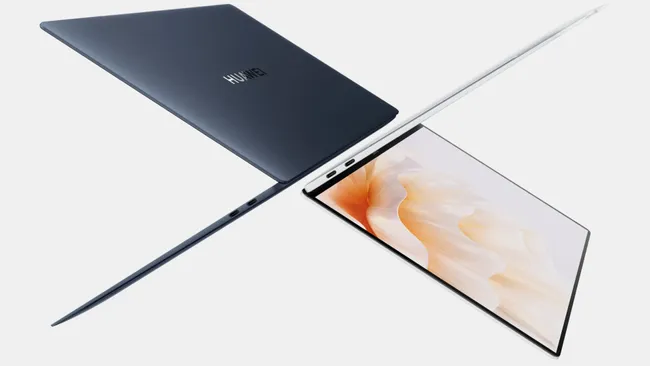Highlights
- MateBook X Pro 2024 features Intel Core Ultra ‘Meteor Lake’ processors.
- Ultra-portable design at just 980g and 13.5mm thickness.
- 14.2-inch OLED touchscreen with HDR and 120Hz refresh rate.
- Available in Core i7 and i9 configurations with up to 32GB RAM and 2TB SSD.
Huawei has just announced a premium new version of its ultra-portable MateBook X Pro laptop.
Despite being incredibly slim and lightweight, it packs Intel’s latest high-performance processors with built-in AI acceleration.
Huawei MateBook X Pro: Pricing and Specs

Prices in China start from CNY 11,000 ($1,520) for the base Core i7 model after discounts.
The top-spec’d Core i9 version with 32GB RAM and 2TB SSD is CNY 15,000 ($2,075).
Pre-orders are open now ahead of an April 18th release date.
The highlights of this 2024 MateBook X Pro are its mere 980g weight and very compact 13.5mm thickness.
Huawei claims it is over 30% lighter than last year’s already svelte model, yet manages to be even more capable.
At its heart is Intel’s new Core Ultra ‘Meteor Lake’ chip, which comes in either Core i7 or range-topping Core i9 configurations.
These chips feature AI hardware acceleration to enable neat software tricks like real-time subtitle generation.
The laptop’s stunning 14.2-inch OLED touchscreen display has a very sharp 3120 x 2080 resolution in a squarer 3:2 aspect ratio.

It supports HDR with up to 1,000 nits peak brightness and 120Hz high refresh rate for silk-smooth visuals.
In terms of memory and storage, buyers can opt for 16GB or 32GB of RAM along with either a spacious 1TB or massive 2TB SSD.
Huawei’s premium metallic chassis comes in three stylish colors – Inkstone Black, White, or Clear Blue Snow.
Despite its ultra-portable size, the MateBook X Pro packs serious performance punch aided by the Core Ultra chips’ support for up to 40W power draw.
Huawei boasts it will outpace even Apple’s MacBook Pro 14 while being much lighter than the MacBook Air.
FAQs
What makes the Huawei MateBook X Pro 2024 stand out in the laptop market?
The Huawei MateBook X Pro 2024 distinguishes itself with its ultra-lightweight and slim profile, weighing just 980g and measuring 13.5mm in thickness.
Despite its compact size, it packs powerful Intel Core Ultra ‘Meteor Lake’ processors and boasts a stunning 14.2-inch OLED touchscreen display, setting a new benchmark for portability and performance in the premium laptop segment.
What are the key features of the MateBook X Pro’s display?
The MateBook X Pro’s 14.2-inch OLED display offers an exceptional viewing experience with its sharp 3120 x 2080 resolution and a 3:2 aspect ratio, ideal for productivity tasks and media consumption.
It supports HDR with up to 1,000 nits of peak brightness and a 120Hz high refresh rate, ensuring vibrant colors and smooth visuals.
How does the MateBook X Pro utilize Intel’s Core Ultra ‘Meteor Lake’ processors?
The inclusion of Intel’s latest Core Ultra ‘Meteor Lake’ chips in the MateBook X Pro 2024 allows for significant performance gains, especially with built-in AI hardware acceleration.
This enables advanced software functionalities like real-time subtitle generation, enhancing both work and entertainment experiences on the laptop.
What customization options are available for the MateBook X Pro 2024?
Buyers of the MateBook X Pro can choose between the Core i7 and Core i9 processor configurations, with memory options of 16GB or 32GB of RAM and storage choices between a 1TB or 2TB SSD.
The laptop also comes in three stylish colors – Inkstone Black, White, and Clear Blue Snow, catering to various user preferences.
Also Read: Huawei Pioneers Extreme Ultraviolet Lithography Semiconductor Technology Amid Global Sanctions
Also Read: iPad Pro (2024): Design, Processor, Cameras, Display, and, What To Expect
Also Read: Tracing the Evolution of iPad Chipsets: From A4 to Apple Silicon
